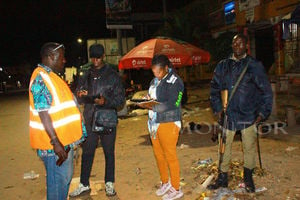1900 Agreement divided land into mailo and Crown land
One of the elusive issues which faced the Constituent Assembly members related to Buganda’s demand for the return of its 9,000 square miles or mailo akenda.
The origin of the problem created by this land can be traced to the Land Regulations of 1887 under which the Commissioner (Governor) was empowered to grant to any person the portion of land described in the certificate issued to him as long as the land was not occupied by a native or non-native.
The effect of this provision was to create a two-tier land system - one governed by customary law and the other based on documentary title registrable at the Land office. The Land Regulations were replaced by the Crown Lands Ordinance, which further entrenched the Governor’s powers over land.
Later in 1922, the Crown Lands (Declaratory) Ordinance vested all land in Uganda in the British Crown to be managed by the Governor. Before 1922, land grants by the Governor were registered under no particular system, but the Registration of Titles Ordinance of that year, created three types of land registers namely for freehold, mailo and leasehold registers.
All land in the country, including mailo land, was freehold except mailo, had attributes which made it stand alone. Most importantly, mailo was a system under which customary ownership in Buganda was confirmed through issuance of a title deed by the Governor, who could only do so after the Lukiiko had verified such ownership and certified that the person named in it occupied the land in accordance with the customary laws of the area.
Section 4 of that Land Law provided that “No transaction concerning such land (mailo) shall be valid unless they are verified by the Lukiiko…. The Lukiiko shall at the same time certify that there is no dispute as to the ownership of the land for which a certificate is issued in manner aforesaid.”
Under the Buganda Agreement of 1900 land in Buganda was divided into two parts namely mailo (8000 square miles) and Crown land (9000square miles.) Mailo was received by 1,000 ‘chiefs and private land owners’ in respect of “the estates of which they are already in possession…..”
Something has to be said about the chiefs who shared in the 8,000 square miles. The religious wars, which afflicted the kingdom in the 1880s, resulted in a situation in which the Catholics were known as the Kabaka’s men because the Kabaka was a Catholic and the Protestants as Katikkiro’s men because the Katikkiro belonged to that faith.
One researcher wrote in a book the numerical strength of the Catholic group tilted ‘The Balance,’ which was necessary to maintain the system of equal allocation of land and offices…
According to the Bukumbi agreement of 1888 between the Catholics and Protestants in order to preserve the equal division of the country, the chieftainships, estimated to be 600 in all, were equally shared out between the two parties…”
From the above history, we learn that the 9,000 square miles in Buganda forms the area over which no milo land certificates were granted by the Governor and that it was freehold land.
Secondly the colonial government operated a two-tier system of land governance and that government’s functions were limited to only surveying, registration and keeping of records.
Section 19 of the Buganda Agreement of 1961 returned Crown Land in Buganda to the Buganda Land Board. The section provided “There shall be a Buganda Land Board to which shall be vested all public land of the Kabaka’s government. The board shall hold such land in the name of the Kabaka for the benefit of the people of Buganda.”
Mr Mulira is a lawyer.
[email protected]




